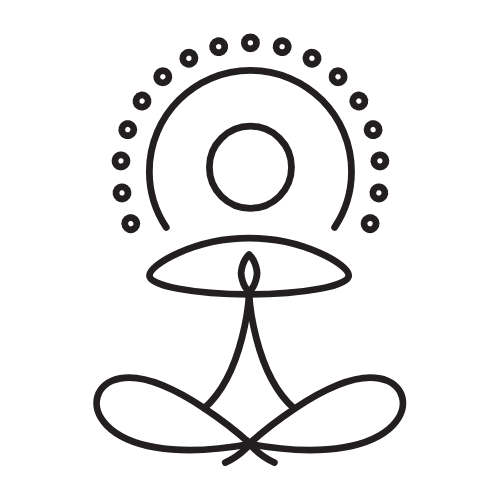There are so many tools you hold within your own body to shift the dial on your health and wellbeing. Exercise is a game-changer. A good night’s sleep can be transformative. Meditation is deeply nourishing. But there’s something incredibly simple we often overlook: the power of our breath.
What is breathwork?
Breathwork is a broad term and can refer to any breathing exercise in which you focus on your breath and intentionally change your breathing pattern. Although breathwork is soaring in popularity as a wellness practice and biohack, it’s not just another trend – people have been using breathing techniques for thousands of years for their mental and physical benefits, with roots in yoga (you may have heard the term pranayama in a class!), traditional Chinese medicine, Ayurveda and Eastern medicine.
Although there are a range of breathwork techniques people may follow for various benefits related to emotional processing, sleep, energy, happiness and self-esteem, the primary aim of breathwork is typically to reduce stress, shift your mental focus and promote a sense of relaxation or wellbeing. One of the best parts – it’s very accessible and free!
Shift out of fight or flight mode
As the Cleveland Clinic explains, breathwork can help you calm down and move your body and mind out of fight or flight mode. Unfortunately due to our high-stress, fast-paced lifestyles, many of us spend a significant amount of time with our sympathetic nervous systems activated, living in a stress response state with physiological changes such as an increased heart rate, higher blood pressure, faster and more shallow breathing, and high cortisol levels.
Your body’s stress response is essential and healthy, but it should switch on in bursts rather than at all times. Chronic stress is incredibly damaging to your health and can contribute to many illnesses and conditions. Burnout should never be worn as a badge of honour.
Your parasympathetic nervous system (aka your “rest and digest” or “feed and breed” mode) is like the brake, activated when your body feels calm and important for essential bodily functions such as digestion, sexual function and healthy cardiovascular function. If you need a little more calm in your body, mind and life, breathwork can help you get there.
At a basic level, breathwork is a great way to flood your body and brain with oxygen. Focusing on your breath is also a simple way to take your mind away from stressful thoughts and communicate to your body that you’re safe and it’s okay to relax.
What is diaphragmatic breathing?
Diaphragmatic breathing is often part of a breathwork practice and is also referred to as belly breathing or abdominal breathing. With diaphragmatic breathing, you want to actively feel and see your belly expanding and contracting (or rising and falling if you’re lying down) with each full breath. Harvard Health says that although shallow “chest breathing” has become normal, it increases tension and anxiety. On the flip side, diaphragmatic breathing has been shown to help lower your heart rate and blood pressure while encouraging a full oxygen exchange.
This style of breathing also has an important role in many postpartum exercise programs, as it can be a helpful tool to promote better core and pelvic floor function. 360-degree diaphragmatic breathing is a key part of Britany Williams’ two Core & Restore programs, and Britany knows firsthand how powerful your breath can be on your postpartum journey.
“Breathing is how you regulate intra-abdominal pressure and being able to regulate this pressure is how you improve and minimise the risk of core dysfunction,” she says.
“In my breathwork sessions, you’ll learn proper movement of the diaphragm, rib cage and pelvic floor during both inhalation and exhalation and will learn how to properly engage your core in alignment with your breathing. Core & Restore will teach you how to integrate this natural breathing technique into different exercises and movement patterns so that you’ll know how your breath can support and aid your strength and fitness goals in workouts of any kind.”
The science of breathwork
The fact that oxygenating your body and taking some slow, deep, mindful breaths can make you feel good is a no-brainer, so does the research support breathwork for more robust health benefits? Yes!
One 2021 literature review of 13 studies found that voluntary diaphragmatic breathing resulted in positive outcomes such as decreased blood pressure, reduced heart rate, an overall relaxing effect, and reduced anxiety in hypertensive or prehypertensive individuals.
Similar findings came from a study from 2023, with daily deep breathing exercises shown to reduce blood pressure, stress and anxiety, with limited evidence also showing beneficial effects on some health issues such as migraines, asthma, sleep and gastrointestinal disorders.
Another study from 2017 concluded that diaphragmatic breathing can improve sustained attention, cortisol levels and mood, while a 2018 systematic review found positive psychological and behavioural effects were induced by slow breathing techniques.

Funny feelings during breathwork? They’re normal!
If you’re new to any kind of breathwork, know that it’s completely normal to feel a range of sensations during your practice. Most of these are a natural result of flooding your body with oxygen, such as lightheadedness, tingling, changes in vision or ringing in your ears. Remember – you can take a break whenever you need to.
If you ever try holotropic breathwork, which involves more intense, fast breathing patterns and is best done with a trained practitioner, the experience can be even more heightened.
Simple breathwork exercises
Want to try breathwork at home and see how you feel? Here are some of the most simple breathwork exercises you can easily do on your own from almost anywhere!
-
Box breathing: Think about creating a box shape with your breath by inhaling for four seconds, holding your breath for four, exhaling for four, and holding for four before starting again.
-
Alternate nostril breathing: Bring your right hand to your nose, block your right nostril with your right thumb and then inhale through your left nostril. Use your right forefinger to block your left nostril, then exhale through your right nostril. Inhale through your right nostril, then block your right nostril again with your right thumb before exhaling through your left nostril. Repeat.
-
4-7-8 breathing: Inhale for four seconds, hold your breath for seven seconds, then exhale for eight seconds. Repeat.
-
Pursed lip breathing: Take breaths breathe deeply and slowly through pursed lips, as though you were sipping air through a straw.
-
Ujjayi breath: This ancient yogic technique is all about making your exhale audible. To get the hang of it, inhale through your nose and exhale through your mouth as if you were trying to fog up a mirror. For a more advanced version, inhale and exhale through your nose with an audible exhale, making a sound like Darth Vader.
-
Lion’s breath: Inhale deeply through your nose, then exhale forcefully through your mouth, sticking out your tongue and making an audible “haaa” sound like a quiet roar.
YogaFokus is about so much more than your workouts
Feel your best – inside AND out
Throughout every moment in your life, you carry your breath with you and it holds incredible power to shift how you feel in your mind and body, yet how many of us go an entire day or week without taking a series of conscious, mindful breaths? Try some simple breathwork practices and let yourself be surprised. Every inhale and exhale is an opportunity to feel more grounded, calm and present in your body.

